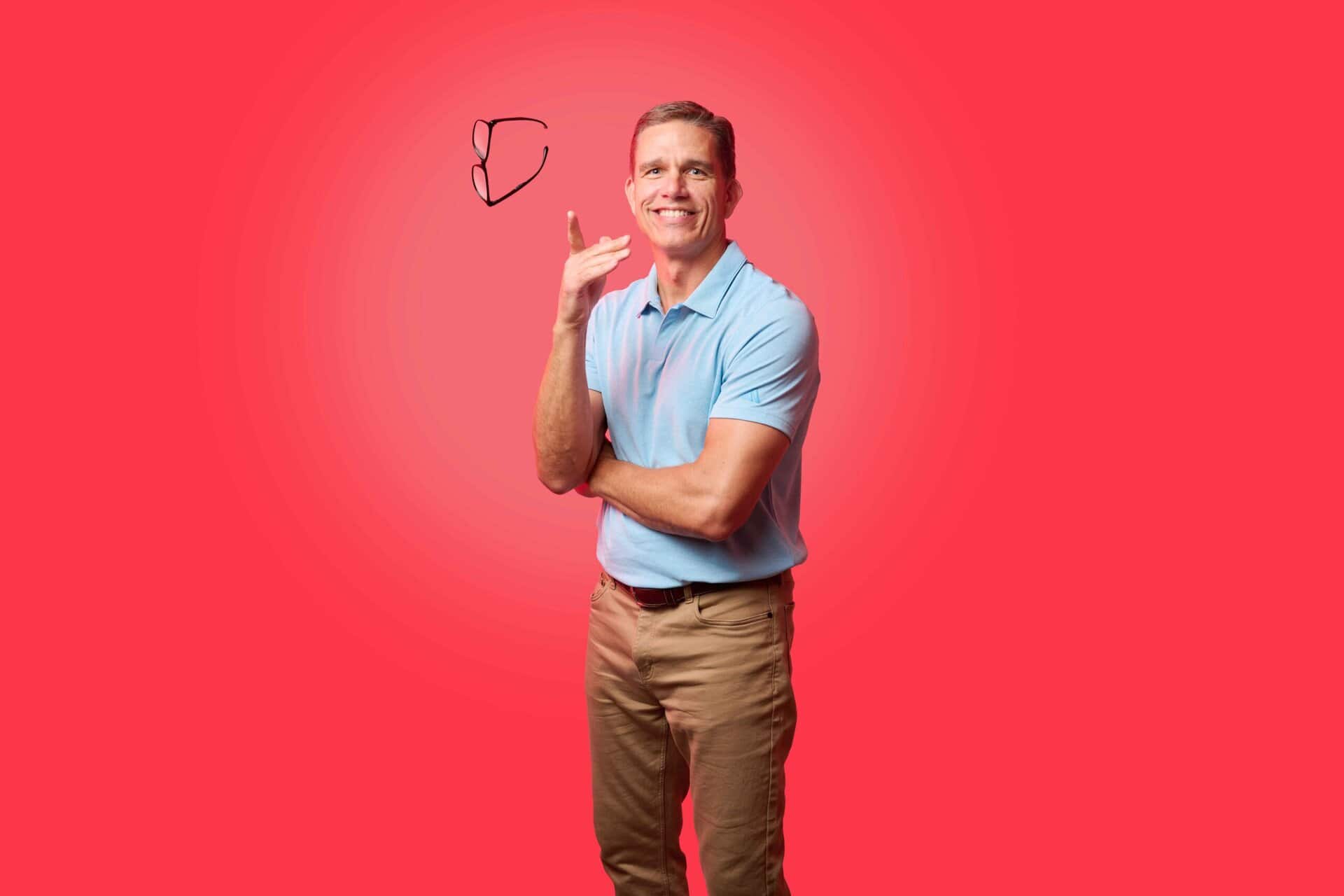Former NFL quarterback and current broadcaster Trent Green has always relied on sharp vision—whether scanning the field for a pass or analyzing plays from the broadcast booth. But when age-related changes started affecting his eyesight, he knew it was time to take action. Here, Trent shares his personal experience with Refractive Lens Exchange (RLE), from the moment he noticed his vision changing to the life-changing results that followed.
Note: The following story is shared in Trent’s own words and has been lightly edited for clarity and brevity.
As a football player and now a broadcaster, why is your vision so important?
As a quarterback my vision was obviously a very important part of playing the position – reading the playbook, watching film, and especially on game day: seeing the whole field, having strong peripheral and distance vision, and adapting to lighting and weather. I always had 20/15 vision or better, and it was something I took for granted.
After I got done playing, I switched to broadcasting. I did some studio work, which is a lot different because you’re stationary with bright lights on you at all times. I also did games for radio and for TV. It’s much different when you’re doing games because there’s not only one camera – there are several, and everyone’s watching the field while you’re talking about what’s happening. For me, having 20/15 vision, being able to look at my notes, see the field, differentiate the players and teams, and relay that to the audience was key. Especially in radio – you have to be their eyes.
When did things start to change with your vision?
I’ve been broadcasting games for 16 years – first radio, then CBS. Calling games means constantly switching focus between monitors, replays, and the field. I had to get readers in my late forties, but as I got older, I started losing distance vision and struggled to differentiate numbers and players, which was a problem.
My vision continued to decline, and it affected my night vision, especially with bright lights. I also needed reading glasses all the time – I couldn’t see my phone, menus, or anything up close. That’s when it dawned on me that I needed to address it. My wife had been to Durrie Vision and encouraged me to schedule a consultation.
Why did you choose Durrie Vision?
Experience is a big thing for me. I had multiple surgeries and concussions during my NFL career, so I was always thorough about choosing the doctors and procedures I wanted. I didn’t want to just go to anyone that claimed they were good or that they could get me back to where I was before.
It was no different with broadcasting. I’d always had 20/15 vision – no issues reading, driving, picking out numbers, or with peripheral vision. When that changed, I tried contacts but didn’t like how they affected my peripheral. My wife shared her experience with Durrie Vision, so I did my research—how many procedures they’ve done, how long they’ve been doing it, who’s the best, who has the experience to handle unique cases. That’s what it came down to.
What was the consultation like?
The consultation was great. Everyone was welcoming, and the process was easy. They walked me through the day –who I’d meet and what to expect with the testing. It was thorough, and afterward, I met with Dr. Stahl to review everything and discuss my options.
What was it like the day of your procedure?
The day of surgery, my wife came since I couldn’t drive home – not because I’d be loopy, but due to the eye drops and vision afterward. Everything was seamless. The first person I met walked me through the day and the procedure. I’m very detailed, so I appreciated knowing exactly what to expect. I liked being awake and able to ask questions. Dr. Stahl and his staff were incredible.
How did Refractive Lens Exchange improve your vision in the first few weeks?
The thing I noticed right away was everything was a lot more crisp and clear. The brightness levels and the details really caught me off guard. Every day and every week it continues to get better. I don’t use readers now. I can read up close. I can read at arm’s length. I can read at whatever distance I want to read at. It’s nice to not have to carry those readers around everywhere. But the best part about it is that I was driving the next day, and I did not feel uncomfortable at all. I thought that was something that would take some adjustment, but that wasn’t the case.
What does life look like now, post Refractive Lens Exchange?
For me personally Refractive Lens Exchange was life-changing. It’s amazing to wake up in the morning and be able to see, to not have to reach for my glasses, to get in the shower and be able to see. It’s the little things throughout the day that you don’t even realize you’re having to compensate for by wearing glasses or contacts. It’s been incredible, and I couldn’t be happier.

Author Bio: Jason E. Stahl, MD
Top Doctors: https://www.castleconnolly.com/top-doctors/jason-e-stahl-ophthalmology-129cc002150
Best Cataract Surgeons: https://bestcataractsurgeons.com/cataract-surgeons/jason-e-stahl/

